#Musée Anne Frank
Text
Pie boy transformé en hooligan Début 2013, la police a accusé Bieber d'avoir abusé de drogues douces avec des amis

Quelques mois plus tard, quelqu'un a remarqué un étrange liquide dans un gobelet en plastique entre les mains du chanteur. Après inspection, il s'est avéré qu'il s'agissait de sirop contre la toux avec de la codéine.
En 2014, les voisins de Bieber ont contacté le poste de police, affirmant que le jeune talent avait jeté des œufs pourris sur leur maison. Au cours de la perquisition, la police a trouvé de la cocaïne au domicile du chanteur, qui, selon Justin, appartenait à son ami, le rappeur Lil Za. Et une semaine plus tard, Bieber a été arrêté pour avoir couru autour de Miami en état d'ébriété - il a parcouru la ville dans une Lamborghini jaune, ignorant complètement les règles de circulation. Un test de police a révélé des traces de marijuana et d'alcool dans le sang du chanteur, mais il n'y a pas eu de sanction - Justin s'est "racheté" aux représentants de la loi en déposant une caution d'un montant de 2,5 mille dollars.
Cependant, Justin a été exposé non seulement pour son amour de la drogue, mais aussi pour son manque de respect pour les valeurs culturelles. Lors de la tournée de Tokyo en avril 2014, il a pris un selfie avec en arrière-plan le temple Yasukuni - un sanctuaire shinto, l'une des pierres angulaires de l'idéologie du militarisme japonais. Les internautes ont été indignés et l'artiste a dû repousser de nombreuses suggestions pour "supprimer des lacunes dans l'éducation".
Bieber a fait une erreur encore plus ignorante lors d'une tournée à Amsterdam. Il a visité le musée Anne Frank, après quoi il a déclaré : « Je suis très inspiré par cet endroit. Je suis sûr qu'Anna était une excellente fille. J'espère qu'elle deviendra ma fan."
1 note
·
View note
Text
Exploring Europe on a Budget: Free Things to Do in the Old Continent!
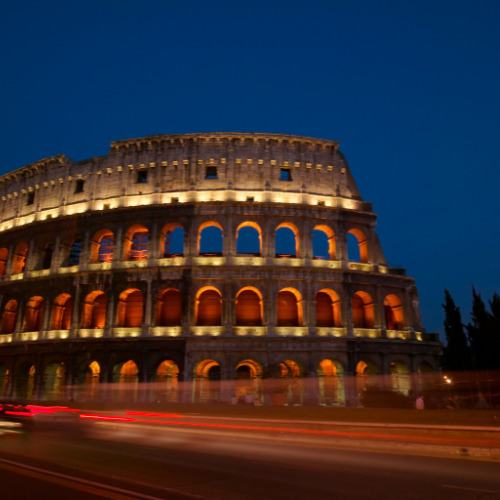
Europe, with its rich history, diverse cultures, and stunning landscapes, is a dream destination for travelers worldwide. However, experiencing Europe doesn't have to break the bank. From iconic landmarks to hidden gems, there are plenty of free activities to enjoy across the continent. Whether you're a budget traveler or simply looking to save some euros, here's a curated list of free things to do in Europe.
1. Wander Through Time in Rome
In the eternal city of Rome, history comes alive at every corner. Visit the iconic Pantheon, marvel at the ancient ruins of the Roman Forum, and toss a coin into the Trevi Fountain for good luck. Don't forget to explore the charming streets of Trastevere and enjoy breathtaking views of the city from the Janiculum Hill.
2. Get Lost in Barcelona's Gothic Quarter
Barcelona's Gothic Quarter is a labyrinth of narrow streets, medieval buildings, and hidden squares. Lose yourself in its atmospheric alleys, admire the stunning architecture of the Barcelona Cathedral, and soak up the vibrant street life along La Rambla. Don't miss the chance to relax at the picturesque Park Güell, designed by the renowned architect Antoni Gaudí.
3. Experience Art and Culture in Paris
In the city of love and lights, cultural riches abound. Explore the world-class art collections at the Musée d'Orsay and the Centre Pompidou, and admire the breathtaking architecture of Notre-Dame Cathedral. Take a leisurely stroll along the Seine River and picnic in the charming gardens of Luxembourg Palace. For a unique experience, visit the atmospheric Shakespeare and Company bookstore and lose yourself in its literary treasures.
4. Discover Natural Wonders in Iceland
Iceland is a paradise for nature lovers, with its otherworldly landscapes and natural wonders. Visit the majestic Gullfoss waterfall, marvel at the geothermal wonders of the Blue Lagoon, and hike through the dramatic landscapes of Þingvellir National Park. Don't forget to chase the elusive Northern Lights for a magical experience you'll never forget.
5. Explore the Beauty of Prague
Prague, with its fairytale architecture and charming streets, is a delight to explore on foot. Wander through the historic Old Town Square, admire the iconic Charles Bridge, and climb up to Prague Castle for panoramic views of the city. Explore the hidden courtyards and quirky art installations of the Prague Castle complex, and don't miss the chance to sample delicious Czech street food at the bustling markets.
6. Embrace the Spirit of Amsterdam
In Amsterdam, cycling is not just a mode of transportation but a way of life. Rent a bike and explore the city like a local, cruising along picturesque canals and charming streets. Visit the famous Anne Frank House to learn about the city's poignant history, and explore the vibrant neighborhoods of Jordaan and De Pijp. Don't forget to take a leisurely stroll through the serene Vondelpark and soak up the beauty of nature in the heart of the city.
Plan Your Budget-Friendly European Adventure with Flamingo Travels
With so much to see and do in Europe, planning your itinerary can be overwhelming. Thankfully, Flamingo Travels offers a range of Europe tour packages designed to suit every budget and preference. Whether you're dreaming of exploring the historic cities of Italy, soaking up the sun on the beaches of Greece, or embarking on a scenic road trip through the Swiss Alps, Flamingo Travels has got you covered.
From expertly crafted itineraries to personalized service, Flamingo Travels takes the stress out of planning your European adventure, leaving you free to focus on making memories that will last a lifetime. So why wait? Start planning your budget-friendly European getaway today and embark on the adventure of a lifetime with Flamingo Travels.
In conclusion, exploring Europe doesn't have to break the bank. With a little bit of planning and a sense of adventure, you can experience the best that the continent has to offer without spending a fortune. So pack your bags, hit the road, and get ready to discover the magic of Europe, one free attraction at a time.
#europe 2024#budget europe tour#europe tour packages#free things to do in europe#europe tours#europe tour packages from ahmedabad
0 notes
Text
The Evens Arts Prize 2019

The Evens Arts Prize 2019 was awarded to choreographer and artist Eszter Salamon. Composer Éliane Radigue received the Special Mention of the Jury.
The laureates were selected by an independent jury, who chose from a list of 45 internationally acclaimed artists, nominated by representatives of major European cultural institutions.
The Jury of the 2021 edition was composed of Cristina Grande, Head of the Performing Arts Department, Serralves Foundation, Porto; Andrea Lissoni, Senior Curator of International Art (Film), Tate Modern, London; Malgorzata Ludwisiak, Director, Ujazdowski Castle, Center for Contemporary Art, Warsaw; Frank Madlener, Director, IRCAM, Paris | Christophe Slagmuylder, Artistic Director, Wiener Festwochen, Vienna. The Jury Chair was Ernest Van Buynder, former Chairman, M KHA, Antwerp.
Curated by Anne Davidian for Evens Foundation.
The Laureate
The Jury has acknowledged Eszter Salamon’s ambitious and uncompromising work that explores contemporary issues touching upon what has been forgotten, excluded, and repressed in Western consciousness. The Jury has particularly valued the strong European resonance of her work and the way it articulates individual and collective experiences. Building on history to imagine a possible future, Salamon’s œuvre embodies an immaterial inheritance of gestures, movements, and dances to reaffirm art’s insight into the contemporary world.
Born in Budapest, Eszter Salamon lives and works between Berlin, Paris, and Brussels. Her work has been presented at Centre Pompidou, Avignon Festival, PACT Zollverein Essen, Ruhrtriennale, Holland Festival, The Kitchen New York, HAU Hebbel am Ufer Berlin, Berlin Documentary Forum, Kunstenfestivaldesarts Brussels, and Manchester International Festival, as well as in museums including MoMA, Witte de With, Serralves Foundation, Jeu de Paume, Akademie der Künste Berlin, and mumok Vienna.
The award ceremony and a discussion with Eszter Salamon took place on April 12, 2019, at the Akademie der Künste, Berlin, during the opening evening of the conference A Soul for Europe.
The Special Mention of the Jury
The Jury recognised and awarded with a special mention the unique path of French composer Éliane Radigue. One of the most innovative and important contemporary composers, she has been a major influence for generations of composers, musicians and artists alike. Exploring minimal rhythms and changes in different harmonies that unfold into intricate sonic webs, Radigue’s work has been deeply shaped by a constant interest and curiosity towards the world appealing for unique forms of introspection, empathy and attunement with the world.
Pioneer of electronic music, Éliane Radigue began a renewal of her creative process in 2002. Enriching her compositions with new timbres and resonances, she has been collaborating with acoustic instrument performers, for whom she composes without scores, according to the principle of oral and aural transmission.
A special event dedicated to Éliane Radigue was organised at Centre Pompidou in Paris on September 13, 2020, by IRCAM and Musée national d'art moderne, in partnership with the Evens Foundation. Read more
The Nominators of the Evens Arts Prize 2019
Bart de Baere, Director, M KHA, Antwerp | Roman Belor, Director, Prague Spring Festival | Daniel Blanga Gubbay, Artistic Co-Director, Kunstenfestivaldesarts, Brussels | Manuel Borja-Villel, Director, Museo Reina Sofia, Madrid | Silvia Bottiroli, Artistic Director, DAS Theatre, Amsterdam | Yvonne Büdenhölzer, Artistic Director, Theatertreffen Festival, Berlin | Dorota Buchwald, Director, Institut Theatralny, Warsaw | Adam Budak, Chief Curator, National Gallery, Prague | Marie Collin, Artistic Director, Festival d’Automne, Paris | Ingrid De Ketelaere, Head of Performing Arts and Paul Dujardin, Director, BOZAR, Brussels | Ekaterina Degot, Director and Chief Curator, Steirischer Herbst, Graz | Elvira Dyangani Ose, Director, Showroom, London | Silvia Fanti, Artistic Director, Live Arts Week /Xing, Bologna | Hicham Khalidi, Director, Van Eyck Institute, Maastricht | Maria Lind, Director, Tensta Konsthall, Stockholm | Emma Lavigne, Director, Centre Pompidou, Metz | Anne Hilde Neset, Director, Kunsternes Hus, Oslo | Mark Peranson, Head of Programming, Locarno Film Festival | Nataša Petresin-Bachelez, Curator, Contour Biennale 9, Mechelen | Jan Raes, Director, Concertgebouw, Amsterdam | Tiago Rodrigues, Artistic Director, Teatro National Dona Maria II, Lisbon | Eva Sangiorgi, Artistic Director, Viennale, Vienna | Alistair Spalding, Artistic Director and Chief Executive, Sadler’s Wells, London | Christa Spatt, Head of Programming, Tanzquartier, Vienna | Virve Sutinen, Artistic Director, Tanz im August Festival, Berlin | Vangelis Theodoropoulos, Artistic Director, Athens & Epidaurus Festival | Igor Toronyi-Lalic, Artistic Director, London Contemporary Music Festival.
The selection of the panel of experts has been made with the advice of Filipa Ramos, editor in chief of art-agenda.
📷 Eszter Salamon ©Bea Borgers | Eliane Radigue ©Delphine Migueres
0 notes
Text
Amsterdam


Gare centrale d'Amsterdam
Amsterdam est un exemple en Europe sur le plan écologique, la plupart des habitants se déplace en vélo ou en transport en commun.
c'est de toute façon le moyen le plus simple car la ville n'est pas particulièrement optimiser pour les voitures.
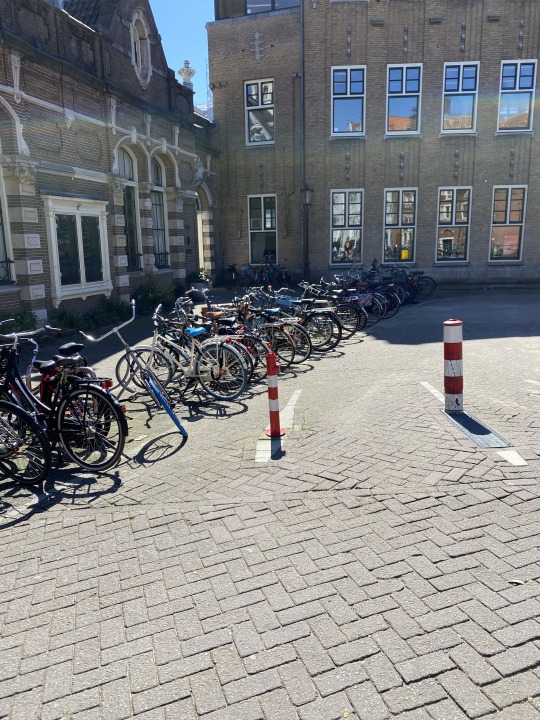
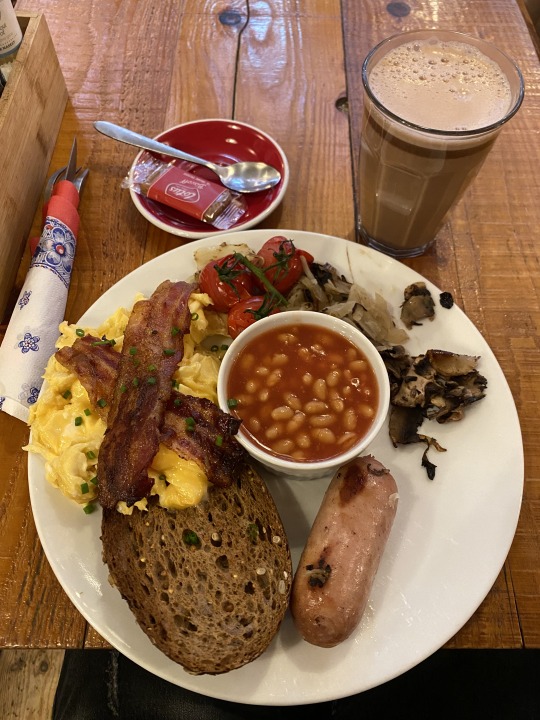
Si vous souhaitez manger un petit déjeuner je vous conseille de vous rendre a Omelegg, un accueil chaleureux et une bonne atmosphère a l'intérieur. Enseigne très réputé dans la capitale.

Amsterdam est composer d'une multitude de canaux, la ville est constituer principalement par des appartements en pierre colorer.
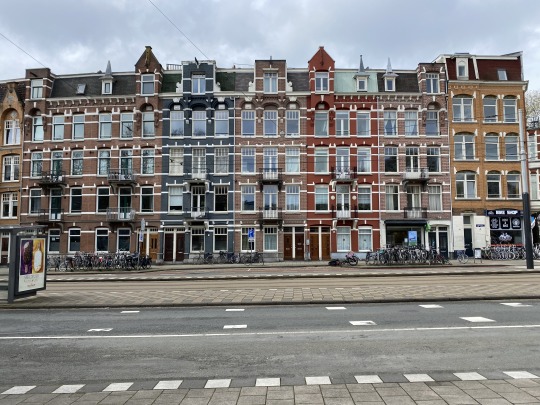
illustration de mon propos précédent.

édifice en hommage a Anne Frank


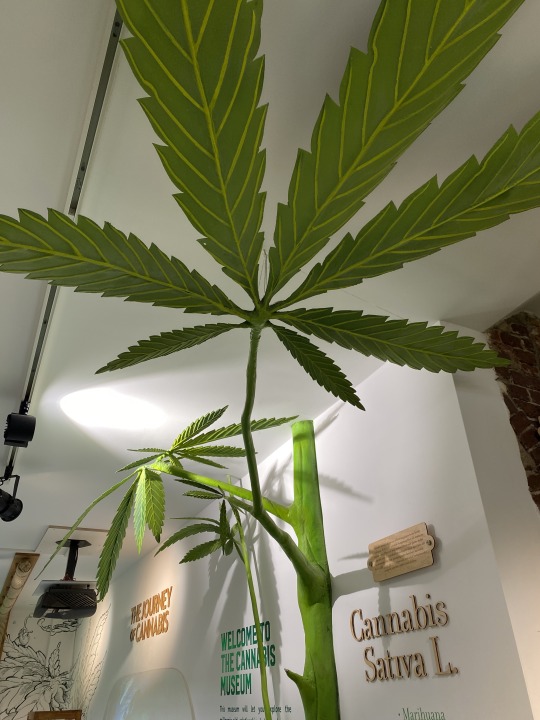
Le Cannabis Museum
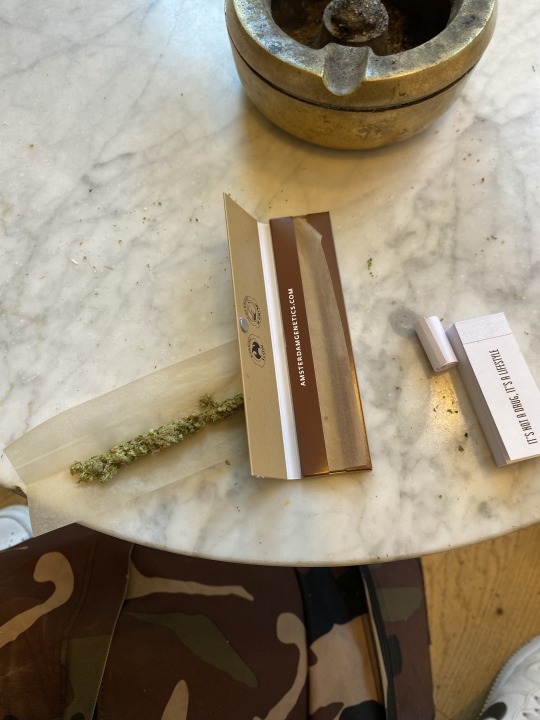
Pour les curieux ou les amateurs de cannabis je vous conseille cette adresse, Boerejongens est la plus grosse enseigne dans le domaine du coffee shop a Amsterdam réputé pour avoir la meilleur qualité de produits. Il faut savoir que la consommation de tabac est interdite dans les lieux publics même a Amsterdam. Je vous invite donc a ne pas fumer c'est produits dans le coffee shop en pure sans tabac comme j'ai pu le faire. Amsterdam regorge de Park public très sympathique pour votre dégustation.
au menu je vous conseille de gouter leurs Amnesia G13.
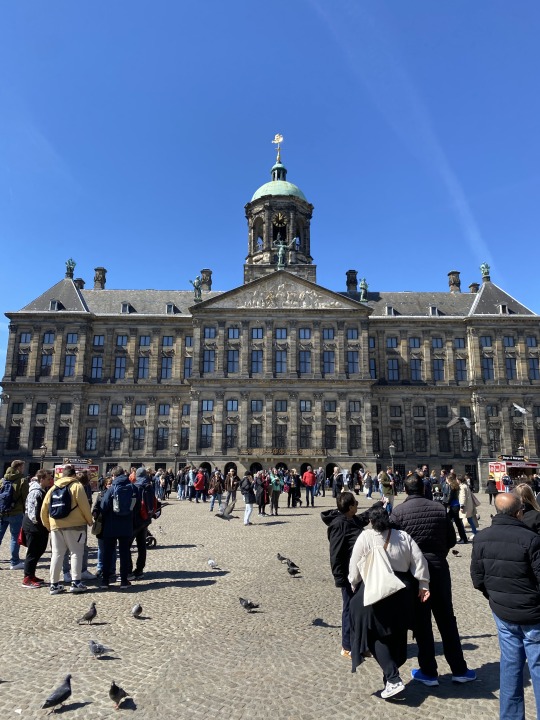
Palais op de Dam sur la Dam Square

En conclusion Amsterdam est une ville ou il fais bon vivre, j'en retiens un agréable séjour sauf mon hotel qui été infester de punaises de lit et autres. Si vous souhaiter visiter cette ville a moins de dormir dans des Hostels je vous conseille de débourser minimum 150 euros par nuit ou de vous faire héberger, sans cela vous pourriez avoir des surprises...
Sinon à par le logement je n'ai pas trouver le prix des restaurants et autres excessifs.
Si votre séjour est anticiper et que vous souhaiter visiter la maison d'Anne Franck, le Rijksmuseum ou encore le Musée van Gogh je vous conseille de réserver a l'avance. sans cela leurs entrées vous sera refusé.
1 note
·
View note
Text
Quand tu écouteras cette chanson, de Lola Lafon
Dans le cadre de la très belle collection Une nuit au musée, Lola Lafon choisit le musée Anne Frank à Amsterdam, qui inclut l’Annexe où la famille Frank et cinq de leurs amis ont vécu cachés entre juillet 1942 et août 1944 où ils ont été arrêtés et déportés. Elle hésite longuement à y aller, […]Quand tu écouteras cette chanson, de Lola Lafon

View On WordPress
0 notes
Text
Quand tu écouteras cette chanson - Lola LAFON
Quand tu écouteras cette chanson de Lola LAFON : les propos déformés des ados
Il y a quelques années, en faisant la queue en attendant d’entrer dans le musée Anne Frank, trois jeunes filles effectuaient un sondage pour savoir qui, dans cette queue, avait lu le livre de la jeune fille. Autour de moi, j’étais la seule. Certains en avaient entendu parler, d’autres étaient là parce que c’était un lieu à visiter dans la ville.
Lola LAFON sait, avant de passer la nuit dans le…

View On WordPress
1 note
·
View note
Text
1 note
·
View note
Text
Quand tu écouteras cette chanson
Pour sa contribution à la collection «Ma nuit au musée» Lola Lafon a choisi de passer une nuit en août 2021 dans l’Annexe du musée Anne-Frank, à Amsterdam. Elle y a trouvé bien plus que les traces de la jeune fille.
En lice pour le Prix Le Monde 2022
En deux mots
Le 18 août 2021, Lola Lafon s’installe dans l’Annexe, la partie du musée Anne Frank où a vécu clandestinement la famille et où Anne a écrit son journal. Durant cette nuit particulière, elle va croiser Anne et sa sœur Margot, mais aussi ses ancêtres disparus, Ceausescu et un jeune cambodgien.
Ma note
★★★★ (j’ai adoré)
Ma chronique
Plaidoyer…

View On WordPress
#2021#absence#Adaptation#Amsterdam#Anne Frank#arrestation#écriture#Bergen-Belsen#cache#Cambodge#Camp de concentration#Ceausescu#Communisme#déportation#dictature#Disparition#Famille#journal#Juif#Khmers rouges#littérature#Musée Anne Frank#nazi#nuit#Pays-Bas#prsécution#recueillement#Seconde guerre mondiale#shoah#silence
0 notes
Photo
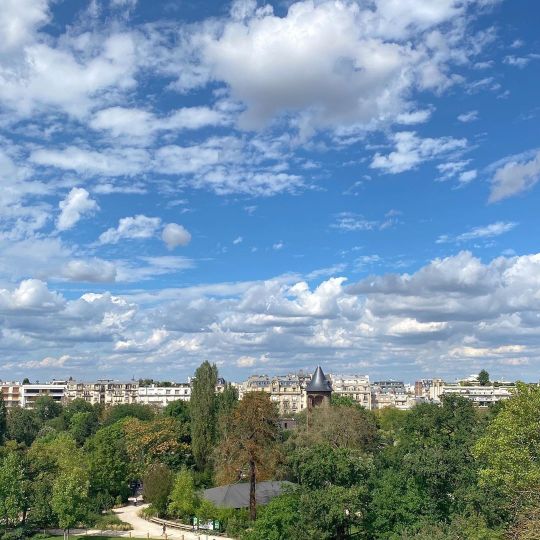
{𝗦𝗻𝗶𝗽𝗽𝗲𝘁𝘀 𝗳𝗿𝗼𝗺 𝘁𝗵𝗲 𝘄𝗲𝗲𝗸-𝗲𝗻𝗱} Comme toujours, j'aurais bien 30 billets à poster de souvenirs de vacances, belles expos, bonnes adresses, mais je manque de temps (𝘰𝘶 𝘫𝘦 𝘮'𝘰𝘳𝘨𝘢𝘯𝘪𝘴𝘦 𝘮𝘢𝘭, 𝘢𝘭𝘭𝘦𝘻 𝘴𝘢𝘷𝘰𝘪𝘳) et un peu d'énergie aussi, alors voilà, ce sont quelques images de ce que fut cet excellent week-end où nous avons cultivé le moelleux, nos amitiés et un peu nos têtes aussi. L'exposition Simon Hantaï à la Fondation Vuitton est très belle et une super découverte (𝘢𝘴𝘴𝘪𝘴𝘵𝘦𝘻 𝘢𝘶𝘹 𝘮𝘪𝘤𝘳𝘰-𝘷𝘪𝘴𝘪𝘵𝘦𝘴 𝘴𝘪 𝘷𝘰𝘶𝘴 𝘢𝘭𝘭𝘦𝘻, 𝘤'𝘦𝘴𝘵 𝘵𝘰𝘶𝘫𝘰𝘶𝘳𝘴 𝘪𝘯𝘵é𝘳𝘦𝘴𝘴𝘢𝘯𝘵). L'essai de Lola Lafon sur sa nuit dans l'Annexe, au musée Anne Frank est bouleversant. Les abricots rôtis au miel et à la crème vanillée de @hollyloupi ont disparu en moins de 5 minutes. La tarte aux mirabelles de M. Papillon tient du petit chef d'œuvre visuel en plus d'être à tomber par terre (𝘮𝘢 𝘮𝘢𝘮𝘢𝘯 𝘱𝘦𝘶𝘵 ê𝘵𝘳𝘦 𝘵𝘳è𝘴 𝘧𝘪è𝘳𝘦 𝘥𝘦 𝘴𝘰𝘯 é𝘭è𝘷𝘦!). Il faut aller voir "Les Extatiques", l'exposition d'art contemporain sur l'Esplanade de La Défense, c'est drôle, poétique, étonnant et très relaxant à regarder. #snippetsfromtheweekend #lesweekendsdespapillons #paris #art #exposition #food #cuisine #cultivonslemoelleux #ipreview via @preview.app (à Paris) https://www.instagram.com/p/ChiMbN3MAEQ/?igshid=NGJjMDIxMWI=
#snippetsfromtheweekend#lesweekendsdespapillons#paris#art#exposition#food#cuisine#cultivonslemoelleux#ipreview
0 notes
Photo

—Lee Siegel, “Misreading Auden”
When last we saw Lee Siegel here at Grand Hotel Abyss, he’d misremembered Roth’s Ghost Writer as a novel in which the hero masturbates over a picture of Anne Frank. In his latest scandal, he writes a polemic against a New York Times essay on Auden’s “Musée des Beaux Arts” he misattributed, in the first version of his piece, to Elizabeth Gilbert, author of Eat, Pray, Love. (The real author is a poet qua Twitter personality—though, to be fair, I am a novelist qua blogger.) Anyway, I agree in general with the gravamen of Siegel’s complaint as screenshotted above.
Auden’s poem is annoying, however: “the dogs go on with their doggy life”—God save us from the incorrigible cutesiness of English writers. Moreover, in the second stanza, how can it be that “everything turns away / Quite leisurely from the disaster” when in fact the ploughman and the ship captain turn away or never even look in the first place because they’re working? And finally, isn’t the poem’s (moralistic) purpose to contrast the life of Jesus evoked in the first stanza (“miraculous birth,” “dreadful martyrdom”) as an event in human history that was “an important failure” permitting us to recognize failure as important, with the whole hubris, brutality, and cynicism of the pagan world typified both by Icarus’s vaulting ambition and his unlamented fall? Isn’t the humble Christian-postmodern poet in fact chastising the Old Masters for their heathen coldness by “regarding the pain of others” they’d relegated to the margin of their splendid panorama?
The poem, therefore, is an origin myth for the very moralism Siegel decries, revealing the Christian root of middle-class progressive self-congratulation for deigning to notice terror, unlike cruel aesthetes and the deplorable working class. Adam Kirsch, contrasting postmodern Auden with modern Pound and Yeats, renders the case more sympathetically in “To Hold in a Single Thought Reality and Justice”:
In the 1930s, he thought justice meant transforming reality in the name of a political ideal. In the 1940s and after, he began to think that this kind of utopianism was actually a sure path to injustice—as it had proved to be in the Soviet Union. Instead, he started to think that the true definition of justice was doing justice to reality, by registering the world as it is, in all its variousness and complexity and individuality. This was a new, essentially postmodernist and antimodernist, view of the relationship between art and the world.
On the other hand, John Dolan, a writer as controversial as Seigel (and for some of the same reasons), pronounced Auden “the worst famous poet of the 20th century” a decade ago:
Auden’s poems after 1940 enact a slow, elderly courtship of the Deity via European high culture as interpreted by a man of limited intellect. As with that other bard of the bell curve, William Carlos Williams, you get a lot of poems based on the paintings of Breughel. Odd, you might think, that two major Modernist poets should make so much of such a busy, cheery Norman Rockwell of a painter. But that’s the point: Breughel is a happy moron, like his 20th century champions. For Williams, he’s the artistic equivalent of a baseball game; for Auden, playing that old-world sage role for all it’s worth in Manhattan, Breughel, incredibly, becomes one of the “old masters” in that famous, rotten hyperbaton, “About suffering they were never wrong, the old masters….” This poem, “Musee des Beaux Arts,” sums up Auden’s meaning and value rather nicely: it’s fake high-European culture for a busy American audience that knows nothing about anything, and simply wants an imported sage to embody the mournful quietism which is the only stance it needs from such decorative figures.
I don’t go that far. I like Auden when he’s singsong and openly polemical, a kind of merry counter-Yeats; and he coined a few imperishable phrases, rendering the poet’s most crucial service to the language. I also sympathize with Auden’s later politics, if only by default, more than Dolan does, even if I think they’re harder to hold with any aesthetic dignity than the politics-with-a-capital-P of “Spain”—or “Easter, 1916.” I think it was Hayden Carruth who said a poet can’t be a liberal or conservative, but only a radical or reactionary. Auden’s conservative liberalism or liberal conservatism would fit better in a novel. But “Musée” shrouds its moralism in excess and imprecise verbiage so that the Christian sermon takes us unawares, a gesture I no doubt unreasonably resent.
#w.h. auden#lee siegel#adam kirsch#john dolan#poetry#literature#english literature#literary criticism
4 notes
·
View notes
Text
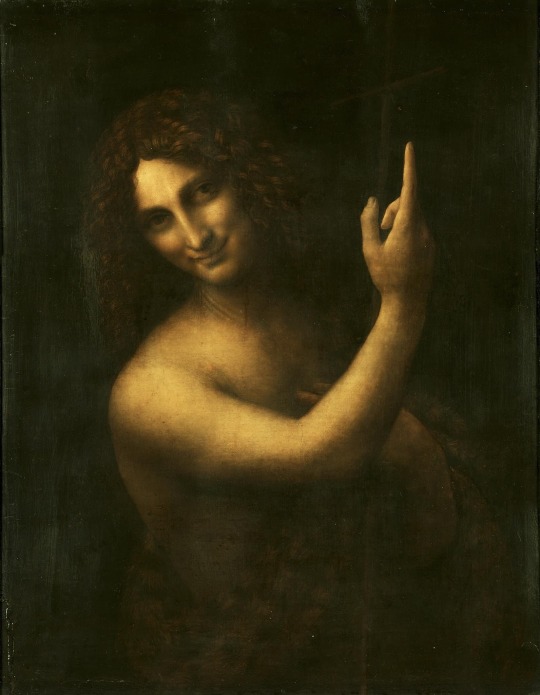
Artwork: Saint John the Baptist
Artist: Leonardo da Vinci, Italian painter (1452-1519)
Created: between 1513, and before 1516
Medium: Oil on panel
Dimensions: 69 cm (27.1 in) x 57 cm (22.4 in)
Current location: Louvre Museum, Paris
Saint John the Baptist is a High Renaissance oil painting on walnut wood by Leonardo da Vinci. Likely completed between 1513 to 1516, it is believed to be his final painting. The original size of the painting was 69 by 57 centimetres (27 in × 22 in). It is now exhibited at the Musée du Louvre in Paris, France.
The work depicts the figure of John the Baptist in isolation through the use of chiaroscuro, with the figure appearing to emerge from the shadowy background. The saint is dressed in furs, has long curly hair and is smiling in an enigmatic manner reminiscent of Leonardo's famous Mona Lisa. He holds a reed cross in his left hand, while his right hand points up toward heaven, similar to the figure of Saint Anne in Leonardo's Burlington House Cartoon. According to Frank Zöllner, Leonardo's use of sfumato "conveys the religious content of the picture", with the "gentle shadows [imbuing] the subject's skin tones with a very soft, delicate appearance, almost androgynous in its effect".
Kenneth Clark claimed that for Leonardo, Saint John represented "the eternal question mark, the enigma of creation", and noted the sense of "uneasiness" that the painting imbues. Barolsky adds that: "Describing Saint John emerging from the darkness in almost shockingly immediate relation to the beholder, Leonardo magnifies the very ambiguity between spirit and flesh. The grace of Leonardo's figure, which has a disturbingly erotic charge, nonetheless conveys a spiritual meaning to which Saint John refers when he speaks of the fullness of grace from God."
Source Wikipedia.
#webgalleryofvisualart #louvremuseum #italianartandartists #lillynisthartistconcept
2 notes
·
View notes
Text
Pie boy transformé en hooligan Début 2013, la police a accusé Bieber d'avoir abusé de drogues douces avec des amis

Quelques mois plus tard, quelqu'un a remarqué un étrange liquide dans un gobelet en plastique entre les mains du chanteur. Après inspection, il s'est avéré qu'il s'agissait de sirop contre la toux avec de la codéine.
En 2014, les voisins de Bieber ont contacté le poste de police, affirmant que le jeune talent avait jeté des œufs pourris sur leur maison. Au cours de la perquisition, la police a trouvé de la cocaïne au domicile du chanteur, qui, selon Justin, appartenait à son ami, le rappeur Lil Za. Et une semaine plus tard, Bieber a été arrêté pour avoir couru autour de Miami en état d'ébriété - il a parcouru la ville dans une Lamborghini jaune, ignorant complètement les règles de circulation. Un test de police a révélé des traces de marijuana et d'alcool dans le sang du chanteur, mais il n'y a pas eu de sanction - Justin s'est "racheté" aux représentants de la loi en déposant une caution d'un montant de 2,5 mille dollars.
Cependant, Justin a été exposé non seulement pour son amour de la drogue, mais aussi pour son manque de respect pour les valeurs culturelles. Lors de la tournée de Tokyo en avril 2014, il a pris un selfie avec en arrière-plan le temple Yasukuni - un sanctuaire shinto, l'une des pierres angulaires de l'idéologie du militarisme japonais. Les internautes ont été indignés et l'artiste a dû repousser de nombreuses suggestions pour "supprimer des lacunes dans l'éducation".
Bieber a fait une erreur encore plus ignorante lors d'une tournée à Amsterdam. Il a visité le musée Anne Frank, après quoi il a déclaré : « Je suis très inspiré par cet endroit. Je suis sûr qu'Anna était une excellente fille. J'espère qu'elle deviendra ma fan."
0 notes
Photo

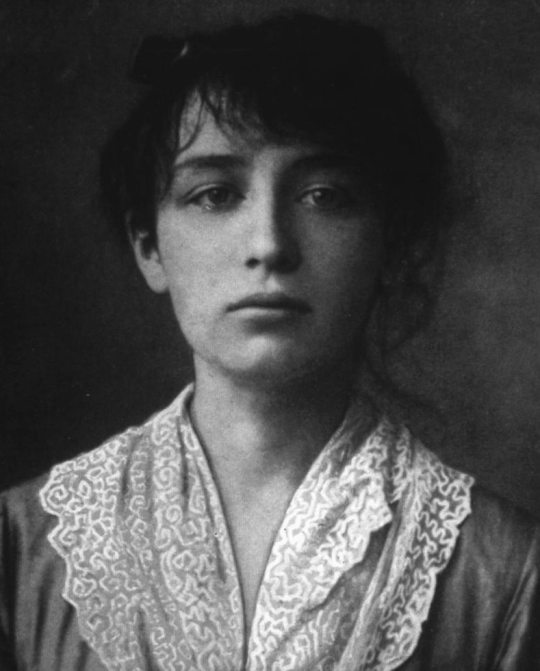
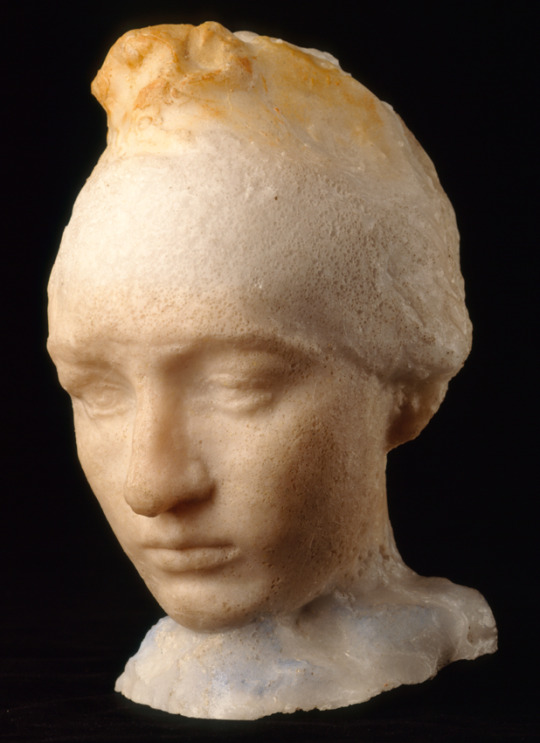
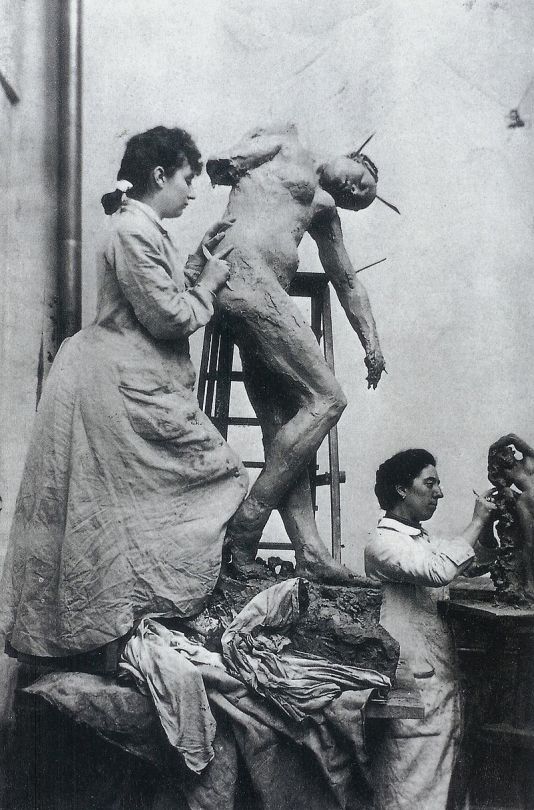

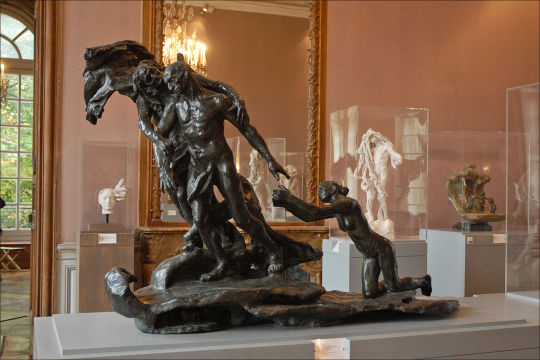
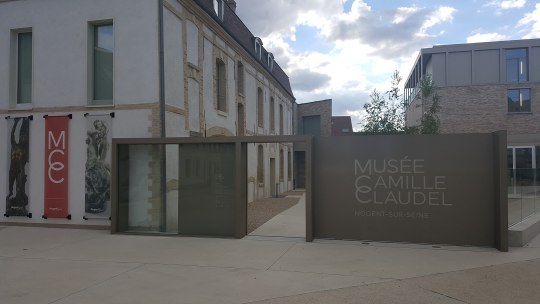

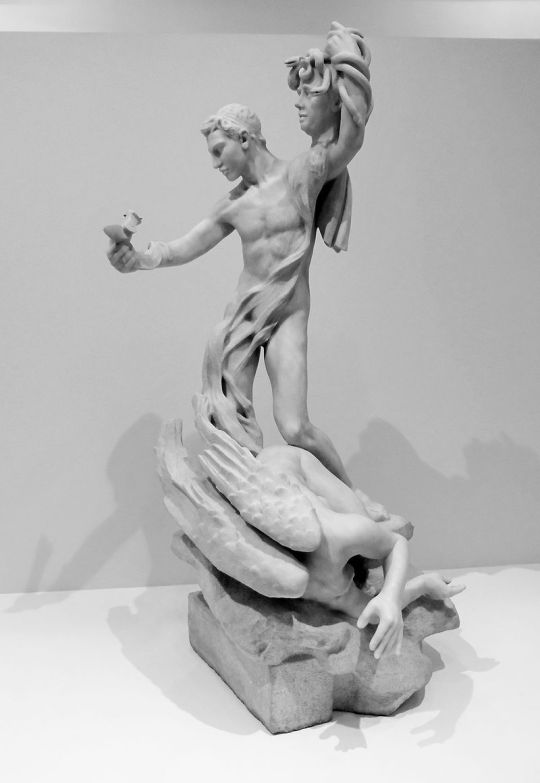
Camille Claudel’s 155th Birthday
Born 8 December 1864 - Fère-en-Tardenois, Aisne, Second French Empire
Died 19 October 1943 (aged 78) - Montdevergues, Vaucluse, Vichy France
Camille Claudel (French pronunciation: [kamij klɔdɛl] (listen); 8 December 1864 – 19 October 1943) was a French sculptor who died in relative obscurity, but has gained recognition for the originality and quality of her work.[1][2] Claudel is known for such sculptures as The Waltz, The Mature Age, and others.
The national Camille Claudel Museum in Nogent-sur-Seine opened in 2017, and the Musée Rodin in Paris has a room dedicated to her works.
Creative period
Study with Alfred Boucher
Claudel was fascinated with stone and soil as a child, and as a young woman she studied at the Académie Colarossi, one of the few places open to female students.[5] She studied with sculptor Alfred Boucher.[6] (At the time, the École des Beaux-Arts barred women from enrolling to study.)
In 1882, Claudel rented a workshop in Paris with Jessie Lipscomb, Emily Fawcett and Amy Singer, the daughter of John Webb Singer, whose foundry in Frome, Somerset, made large-scale bronze statues that are familiar today. Several prominent Frome works are in London, including the Boadicea group on the Embankment, Cromwell, which graces the lawn in front of the Houses of Parliament, and the figure of Justice atop the Old Bailey. General Gordon on his camel at Chatham Barracks was also cast in Frome, as were the magnificent eight lions that form part of the Rhodes Memorial in Cape Town. Claudel visited Frome and the families of her fellow sculptors. All of these English friends had studied at the South Kensington Schools – that would become the Royal College of Art – before moving to Paris to be at the Academie Colarossi, where they had all met. Camille obviously felt very at home with Amy’s family in Frome and prolonged her stay.[7]
Alfred Boucher had become Claudel's mentor, and he also provided inspiration and encouragement to the next generation of sculptors such as Laure Coutan. Claudel was depicted by Boucher in Camille Claudel lisant,[8] and later she sculpted a bust of her mentor.
After teaching Claudel and the other sculptors for over three years, Boucher moved to Florence. Before he left he asked Auguste Rodin to take over the instruction of his pupils. Rodin and Claudel met, and their artistic association and the tumultuous and passionate relationship soon began.
Auguste Rodin
Claudel started working in Rodin's workshop around 1884 and became a source of inspiration for him. She acted as his model, his confidante, and his lover. She never lived with Rodin, who was reluctant to end his 20-year relationship with Rose Beuret.
Knowledge of the affair agitated her family, especially her mother, who already detested her for not being a boy and never approved of Claudel's involvement in the arts.[9][10][11] As a consequence, Claudel left the family home.
In 1892, after an abortion, Claudel ended the intimate aspect of her relationship with Rodin, although they saw each other regularly until 1898.[12]
Le Cornec and Pollock state that after the sculptors' physical relationship ended, she could not get the funding to get many of her daring ideas realized, because of gender-based censorship and the sexual element of her work. Claudel thus had to either depend on Rodin to realize them, or to collaborate with him and let him get the credit as the lionized figure of French sculptures. She also depended on him financially, especially since her loving and wealthy father's death. This allowed her mother and brother, who were suspicious of her lifestyle, to keep the money and let her wander around the streets dressed in beggars' clothes.[13]
Claudel's reputation survived not because of her once notorious association with Rodin, but because of her work. The novelist and art critic Octave Mirbeau described her as "A revolt against nature: a woman genius." Her early work is similar to Rodin's in spirit but shows imagination and lyricism quite her own, particularly in the famous The Waltz (1893).
Louis Vauxcelles states that Claudel was the only sculptress on whose forehead shone the sign of genius like Berthe Morisot, the only well-known female painter of the century and that Claudel's style was more virile than many of her male colleagues. Others, like Morhardt and Caranfa, concurred, saying that their styles have become so different, with Rodin being more suave and delicate and Claudel being vehement with vigorous contrasts, which might have been one reason that led to their break up, with her becoming ultimately his rival.[14][15][16]
Claudel's onyx and bronze small-scale La Vague (The Wave) (1897) was a conscious break in style from her Rodin period. It has a decorative quality quite different from the "heroic" feeling of her earlier work.
Legacy
Though she destroyed much of her work, about 90 statues, sketches and drawings survive.
Some authors argue that Henrik Ibsen based his last play, 1899's When We Dead Awaken, on Rodin's relationship with Claudel.[53][54][55][56]
In 1951, Paul Claudel organized an exhibition at the Musée Rodin, which continues to display her sculptures. A large exhibition of her works was organized in 1984. In 2005 a large art display featuring the works of Rodin and Claudel was exhibited in Quebec City (Canada), and Detroit, Michigan, in the US. In 2008, the Musée Rodin organized a retrospective exhibition including more than 80 of her works.
The publication of several biographies in the 1980s sparked a resurgence of interest in her work.
Camille Claudel (1988) was a dramatization of her life based largely on historical records. Directed by Bruno Nuytten, co-produced by Isabelle Adjani, starring herself as Claudel and Gérard Depardieu as Rodin, the film was nominated for two Academy Awards in 1989. Another film, Camille Claudel 1915, directed by Bruno Dumont and starring Juliette Binoche as Claudel, premiered at the 63rd Berlin International Film Festival in 2013. The 2017 film Rodin co-stars Izïa Higelin as Claudel.
Composer Jeremy Beck's Death of a Little Girl with Doves (1998), an operatic soliloquy for soprano and orchestra, is based on the life and letters of Camille Claudel. This composition has been recorded by Rayanne Dupuis, soprano, with the Slovak Radio Symphony Orchestra.[57] Beck's composition has been described as "a deeply attractive and touching piece of writing ... [demonstrating] imperious melodic confidence, fluent emotional command and yielding tenderness." [58]
Seattle playwright S.P. Miskowski's La Valse (2000) is a well-researched look at Claudel's life.[59][60]
Composer Frank Wildhorn and lyricist Nan Knighton's musical Camille Claudel was produced by Goodspeed Musicals at The Norma Terris Theatre in Chester, Connecticut in 2003.[61]
In 2005, Sotheby's sold a second edition La Valse (1905, Blot, number 21) for $932,500.[62] In a 2009 Paris auction, Claudel's Le Dieu Envolé (1894/1998, foundry Valsuani, signed and numbered 6/8) had a high estimate of $180,000,[63] while a comparable Rodin sculpture, L'éternelle Idole (1889/1930, Rudier, signed) had a high estimate of $75,000.[64]
In 2011 world premiere of Boris Eifman's new ballet Rodin took place in Saint-Petersburg, Russia. The ballet is dedicated to the life and creative work sculptor Auguste Rodin and his apprentice, lover and muse, Camille Claudel.[65]
In 2012, the world premiere of the play Camille Claudel took place. Written, performed and directed by Gaël Le Cornec, premiered at the Pleasance Courtyard Edinburgh Festival, the play looks at the relationship of master and muse under the perspective of Camille at different stages of her life.[
In 2019, to mark the 155th anniversary of Claudel's birth, Google released a Google Doodle commemorating her.
https://en.wikipedia.org/wiki/Camille_Claudel
Camille Claudel née à Fère-en-Tardenois (Aisne) le 8 décembre 1864, et morte à Montdevergues (Montfavet - Vaucluse) le 19 octobre 1943, est une sculptrice et artiste peintre française.
Collaboratrice, maîtresse et muse du sculpteur Auguste Rodin2, sœur du poète, écrivain, diplomate et académicien Paul Claudel, sa carrière est météorique, brisée par un internement psychiatrique et une mort quasi anonyme. Un demi-siècle plus tard, un livre (Une femme, Camille Claudel d'Anne Delbée, 1982) puis un film (Camille Claudel, 1988) la font sortir de l'oubli pour le grand public.
Son art de la sculpture à la fois réaliste et expressionniste s'apparente à l'Art Nouveau par son utilisation savante des courbes et des méandres.
https://fr.wikipedia.org/wiki/Camille_Claudel
5 notes
·
View notes
Text
French Canadian Witchcraft: Bibliography and Abstracts
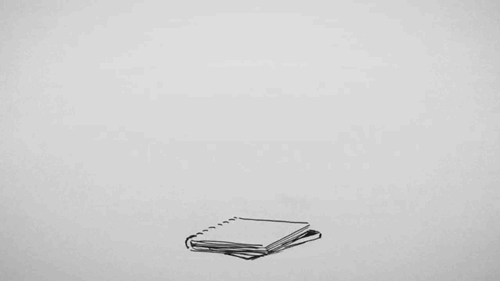
(this is a list of sources I’ve read for my own French Canadian Witchcraft tradition. It includes Montagnais Innu indigenous knowledge (though I try to not overstep, as my ancestors were only present in this culture from 1600 to 1876, but I honour them through knowing about their cosmology and outlooks), and French Canadian history and social analyses. The Voyageur texts by Podruchny were especially fascinating and easy to access. Other sources like articles can be tricky if you don’t have access to them through a university, but if anyone wants them, let me know, I can send them through email.
Armitage, Peter. “Religious Ideology Among the Innu of Quebec and Labrador”. Religiologiques 6 (1982): 64-110.
A complex analysis of Montagnais religious culture and traditions through the lenses of ethnohistory. He explains traditions like the Animal Masters, hunting rites, the Shaking Tent ceremony, and the gendered roles of Innu society in the spheres of religion and culture. He also explains Innu mythology and cosmology, and the realms and rules that exist in those contexts. It is a very thorough text to read for comprehension on Innu religious beliefs and ceremonies.
Abbott, Frank. “The Devil Made Me Do It.”: Popular Spirituality in a Rural Québec Parish, 1736-1901” Journal of the Canadian Historical Association 27 no.1 (2016): 1-30.
Cet article porte sur les récits populaires autour du diable dans la paroisse rurale de Saint-Joseph-de-Beauce, a 70 km au sud de la ville de Québec. Cette étude, une microhistoire de l’interaction des croyances populaires et du discours clérical dans la paroisse sur la longue période, permet de pénétrer dans leurs détails les rapports entre paroissiens et curés qui autrement demeureraient ignorés, mal compris ou même impénétrables au niveau diocésiain. En outre, les récits populaires sur Satan dans le comté de Beauce dévoilent comment le catholicisme interagissait avec le système de croyances populaires au Québec. D’une part, la peur des gens du diable renforça le message clérical sur la nécessité de satisfaire les besoins spirituels sur ceux de l’appétence corporelle. Mais les paroissiens produisirent également leurs propres versions de la construction cléricale du diable, tout en s’écartant parfois sensiblement de ce modèle. Aprréhender les conceptions populaires du diable jette un nouvel éclairage sur la manière dont les récits et les contes populaires ont interpénétré la doctrine catholique, et comment les fidèles ont répondu à l’enseignement de l’Église catholique dispensé du haut de la chair ou du confessionnal (ou pourquoi ils ont failli à le faire.)
Clément, Daniel. “L’Homme-Caribou: l’analyse ethnoscientifique du mythe”, The Canadian Journal of Native Studies 11 no. 1 (1991): 49-93.
Le mythe montagnais l’Homme-Caribou est analysé de façon ethnoscientifique en tenant compte des connaissances autochtones pour expliquer les éléments étranges du récit. Loin de souscrire au postulat de relations structurales entre les phonèmes du récit qui expliqueraient les mythèmes, l’ethnoscience propose plutôt d’en retrouver les origines. Cette recherche des étymons du récit se poursuit sur deux plans. Les aspects humains et zoologiques du récit sont ainsi dégagés, permettant d’entrevoir une image forte de la société montagnaise, a savoir celle d’un mariage entre l’homme et son gibier.
Clément, Daniel. Le Bestiaire Innu: Les Quadrupèdes. Mondes Autochtones, 2012.
This book is insanely amazing! It details in European scientific and biological context, but most importantly and for the major part has ethnological information about the important animals within Innu culture. It details their habits, diets, and mythologies associated with each animal, and what the Innu thought of them. I use it often for adding context to my animal magic and meditation. Summary: Les Innus, anciennement connus sous le nom de Montagnais, sont des chasseurs, trappeurs, pêcheurs et cueilleurs qui habitent la forêt boréale du nord-est du Canada. Par tradition, les animaux ont toujours occupé dans leur culture une place prépondérante. Les connaissances qu'en ont les autochtones sont donc vastes et variées. Ce volume consacré au Bestiaire Innu fait état du savoir innu concernant les 20 mammifères les plus connus, de l'ours noir et du caribou jusqu'aux diverses espèces de souris, en passant par le castor, le loup, le lièvre, le chien et bien d'autres. Des dizaines d'hommes et de femmes ont été interviewés sur les animaux depuis plus de vingt-cinq ans. A ces sources orales s'ajoutent des données provenant d'ethnologues, d'historiens, de missionnaires, de naturalistes, de biologistes et même d'aventuriers ayant parcouru à travers le temps le Nord québécois.
Gaudet, Rose-Delima. “La place de l’Église catholique aux Îles-de-la-Madeleine” Sessions d’études: Société canadienne d’histoire de l’Église catholique 46 (1979): 99-106.
Le sujet proposé sera traité d’après des recherches exécutées aux archives du Musée de la Mer et publiées par nous dans un fascicule intitulé Odyssée missionnaire. Ce n’est qu’une ébauche, mais qui ouvre des horizons sur les activités missionnaires dans les Îles qui—encore récemment— n’avaient pas leur place sur la carte géographique du Canada.
Harmon, Susan Janet. “Mi’kmaw Shamans and Acadian Sorcerers: A Study in Cultural Transmissions, Transferences and Transformations” Supervised by Dr. Jacques Ferland, Doctoral Thesis: University of Maine, (December 2014): 1-221.
Concerned with the preservation of Acadian traditional culture, Acadian folklorists of the later twentieth century undertook the task of interviewing the elder population. One folklorist, Sister Catherine Jolicoeur, collected and classified 20,000 Acadian legends from New Brunswick. Jolicoeur’s collection includes over 400 variants of legends concerning the Mi’kmaq, and more than 350 of these variants associate the Mi’kmaq with sorcery. Acadian informants tell teh story of Mi’kmaw sorcery that follows a similar pattern, whereby the magically empowered Mi’kmaq arrive at Acadian homes in search of charity or to sell their hand-made baskets and other wares. Many of these encounters occurred between Mi’kmaw women, called taoueilles, who were believed to be the more virulent form of sorcerer. It was advisable to never dissapoint their Mi’kmaw visitors; for they would surely cast a malevolent spell in reprisal. Scholars point out that the Acadians imported from France an association of strangers with sorcery, therefore explaining the origins of their belief in Mi’kmaw sorcery. However, French documentary evidence reveals that accused witches in early modern France were more often well known neighbours rather than strangers. An analysis of both Acadian and Mi’kmaw oral tradition and documentary evidence leads to the conclusion that the legend is the product of cultural transference, moreover the legend and its transference served the purpose of social regulation. The Acadians brought with the a European witchcraft tradition, which transitioned and transformed as a result of exposure to a Mi’kmaw cosmology. Conversely, the Mi’kmaq adopted European witchcraft beliefs into their shamanic traditions, whereby a puwowin, or shaman, adopted certain European atributes. Prior to contact, both the Acadian and Mi’kmaw cultures stressed the importance of interdependence, whereby social transgressions concerning notions of reciprocity invoked the power of a retaliatory act of sorcery or shamanic reprisal. The resulting fear of offense served the purpose of controlling social behaviour and became the central theme in stories of Native sorcery within both communities during the post contact years.
Labelle, Ronald. “Native Witchcraft Beliefs in Acadian, Maritime and Newfoundland Folklore” Ethnologies 30, no. 2 (2008): 137-152.
Les légendes et les croyances traditionnelles acadiennes ont été recueillies et étudiées par différents chercheurs, la première étant Catherine Jolicoeur, qui amassa approximativement 400 récits traitant de la population autochtone des Maritimes, alors qu’elle menait ses enquêtes de terrain dans les zones acadiennes du Nouveau-Brunswick. Cet article s’intéresse à la question de la croyance en la sorcellerie amérindienne, non seulement dans le folklore acadien mais également chez les anglophones des Maritimes et de Terre-Neuve, afin de mettre en valeur les ressemblances ou les différences entre leurs systèmes traditionnels de croyance ainsi que leurs attitudes envers les groups amérindiens. On établit une comparaison entre les positions des groupes catholiques et protestants, et on porte une attention particulière aux questions liées au sexe et a l’identité des “sorcières”, en s’appuyant sur des sources allant du dix-septième au vingtième siècle. L’article démontre que durant toutes les périodes de l’histoire, depuis les premiers contacts entre les Européens et les populations autochtones des provinces maritimes, ces dernières ont étés perçues par les Européens comme étant potentiellement dangereuses et elles ont étés soupçonnées de posséder des pouvoirs surnaturels et malveillants.
Lowen, Beltane. French Canadian Witchcraft: the History and Traditions of an Authentic North American Folk Magic Tradition. Sabien Press, 2003. 91 pages.
Only available through the Library and Archives Canada. This book is written by a Wiccan context (meaning it gets its inspiration from Gardenerian traditions and Wiccan principles), attempting to argue that French Canadians as an ethnic people have their own magical tradition. He parallels French Canadian cultural elements like the Devil with the Wiccan Horned God, and the various Saints like Saint Anne and Mary as goddesses in their own right. He details the cultural history of witchcraft in New France, and how monsters such as the werewolf and fairies play roles in environmental magic. His construction of a French Canadian witchcraft tradition takes elements from Wicca (with its Celtic festivals), Christianity (like Saint worship), and folk traditions (such as clothing and crafts). It almost resembles hearth witchcraft, but with a historical and cultural context.
Niemeyer, Mark. “Henry Wadsworth Longfellow’s Evangeline: A Tale of Acadie and the Ambiguous Afterlife of the History of the Acadians. Canadian Review of American Studies 48, no. 2 (2018): 122-145.
Longfellow’s Evangeline was hailed as a great and distinctively American work when it appeared in 1847, and the poem’s use of North American history was a key element in its favourable reception. This use of history, however, is ambiguous and complex. This epic continues, first of all, in a long tradition of romanticized retellings of the heart-rending story of the Acadians. but the work also engages in a dual-level dialogue with both the mid-eighteenth century history of the Acadians, who are pitied, without inciting indignation, and the contemporary history of mid-nineteenth century America, whose expansionism it both implicitly celebrates and criticizes.
Pearl, Jonathan L. “Witchcraft in New France in the Seventeenth Century: The Social Aspect” Historical Reflections/ Réflexions Historiques 4 no. 2 (Winter/Hiver 1977): 41-55.
Surprisingly, New France was almost untouched by the sort of witchcraft accusations and trials which were endemic in New England and Europe throughout the seventeenth century. There were a few cases in which witchcraft, or spells, seem to have been a factor, but they were not formal witchcraft accusations or trials, and one does not detect the same sense of terror as in the European situation. After a brief examination of a few well-known cases in Quebec, this paper will examine several aspects of the culture and society of New France which related to beliefs and practices of witchcraft. We will, through a comparison of these areas with the society and culture of France, attempt to determine the differences which resulted in an almost total lack of witchcraft persecution in New France.
Podruchny, Carolyn. “Werewolves and Windigos: Narratives of Cannibal Monsters in French-Canadian Voyageur Oral Tradition”, Ethnohistory 51 no. 4 (Fall 2004): 677-700.
This fascinating article delves into the cultural ties between French Canadian trappers and indigenous trappers on their respective monsters: the werewolf and the windigo. It illustrates the traits of these two monsters, the social contexts of identifying both of them through their peoples’ perceptions, and exploring how the daily lives of trappers in the wilderness allowed the two beliefs and monsters to flourish. It also deals with the practical symbiosis of the two monsters, as the two cultures intertwined within the context of the fur trade.
Podruchny, Carolyn. Making the Voyageur World: Travelers and Traders in the North American Fur Trade. Toronto: University of Toronto Press, 2006.
Carolyn Podruchny explores the little-known world of the common voyageur in New France through thorough analysis of rare archival material, and interprets the daily lives of the voyageurs and how it informed their unique and eclectic cosmology, marrying French Canadian beliefs and superstitions with Indigenous beliefs and cosmology.
Sandwell, B.K. “The French Canadians”, The Annals of the American Academy of Political and Social Science 253: Features of Present-Day Canada (September 1947): 169-175.
This article explores the unique identity and characteristics of French Canadians and their history. It’s simple and introductory, but concise.
Smallman, Shawn. “Spirit Beings, Mental Illness, and Murder: Fur Traders and the Windigo in Canada’s Boreal Forest, 1774 to 1935.” Ethnohistory 57 no.4 (Fall 2010): 572-596.
This article builds on the extensive literature regarding the Algonquian belief in the windigo, a cannibal spirit, by examining how traders of the Hudson’s Bay Company viewed this phenomenon from the eighteenth to the early twentieth century. As native people brought windigos to posts for care or sought help from HBC employees to protect their families, traders responded to this disorder based on their company’s economic interests and their adherence to Enlightenment thought as well as on indigenous expectations of reciprocity. The fur trade and the windigo disorder were linked historically, so that the passing of the one marked the fading of the other, as the economic and cultural ties that shaped relationships between Algonquians and outsiders underwent a profound change in the early twentieth century. An imperial context ultimately determined how most Canadian institutions responded to the windigo, as colonial authorities created narratives around this disorder designed to increase their control over Cree and Ojibwa communities.
Wintemberg, W. J. “French Canadian Folk-Tales”, The Journal of American Folklore 17 no. 67 Published by American Folklore Society (Oct.-Dec. 1904): 265-267.
The following tales were kindly communicated to me by Mr. John C. Day of Toronto. These tales were related by Mr. Day’s mother, a French Canadian.
23 notes
·
View notes
Text
Des concerts à Paris et alentour
en gras : les derniers ajouts :-: in bold: the last news
Septembre
24/25. John Cale & Cate Le Bon – Cité de la musique|Philharmonie
24. Drab Majesty + SRSQ – Petit Bain ||COMPLET||
25. Franck Vigroux : "Tempest" – La Maison des Métallos
25. Rudolf Eb.Er, Dave Phillips & Alice Kemp : Schimpfluch Affiliated Actions – Instants chavirés (Montreuil)
25. Dälek & Olivier Mellano + L'Envoûtante – Petit Bain
25. Mope Grooves + Lox + Mamie Daragon – Espace B
25. Jeff Mills : "Things to Come" + Anthony Linell & Ali M. Demirel : "Winter Ashes" + Kangding Ray (dj) (fest. Les Veillées électroniques) – La Gaîté lyrique
25. Primal Scream + Idles + Life – Yoyo|Palais de Tokyo (gratuit sur résa) ||COMPLET||
26. Thomas Ankersmit + Martin Tétreault + Mohammad Reza Mortazavi (fest. Crak) – Église Saint-Merri
26. Monolake + Peder Mannerfelt + Murcof & Manu Lacroix (fest. Les Veillées électroniques) – La Gaîté lyrique
26. Burial Hex + Les Chasseurs de la nuit + Common Eider, King Eider + Visions – Les Voûtes
26. Wayne Hussey + Ashton Nyte – Bus Palladium
26. Graham Dunning + Knappy Kaisernappy + Bugaled – Espace B
26. Paracelze + Tout bleu + Intervalle – Le Picolo (Saint-Ouen)
27. Léa Bertucci + Hubbub + Tijana Stankovic (fest. Crak) – Église Saint-Merri
27. Noseholes + Child Abuse + Catisfaction + Claude – Espace B
27. Les Wampas + En attendant Ana – La Station
27. Mon Alberteen + 333boyz – Treize
27. Oil Thief + Death Kneel + Jesuve – La Cantine de Belleville
27. CHDH : “Deciban” + Joris Guibert : “Khromacousma” – 100 ECS
27. Lapse of Reason + Garçon manqué + IV Horsemen + Till Noon – L'International
27. Denise Rabe + Emmanuel + Introversion + Ekserd + Yoannis – Beat Boat
27. Delacave [+ Trisomie 21 ||ANNULÉ||] – Protocol (Pantin)
27. Kamikaze Space Programme + Geistform + Unhuman + Pessimist + Isabassi – Protocol (Pantin)
27. December b2b Ron Morelli + Drame nature + Élise + Hodge + Slutara b2b Urami + Violeta West (Paris Electronic Week) – La Machine
28. Onceim joue Éliane Radigue + Pancrace + Martin Tétreault (fest. Crak) – Église Saint-Merri
28. Noriko Tujiko + I Apologize + KTL + Parhelic Shell (20 ans de la compagnie Gisèle Vienne) – La Station
28. Os Noctambulos + Belmont Witch + Quelque + Les Lignes droites + Noyades – Espace B
28. Nytt Land – Le Klub
28. Tschegue + Slikback + Jardin + Juliana Huxtable + Crystalmess (Redbull Music fest) – La Maroquinerie
28. Lunice + Makala + Kobo + Rakoto3000 + Mel Woods + Sixtion (Redbull Music fest) – La Bellevilloise
28. Ujjaya + Zann + Remco Helbers + Moshé O'Grady (fest. Ambient) – Crypte Ararat|Église Sainte-Anne
28. Casual Gabberz (Paris Electronic Week) – Le Kilowatt (Vitry/Seine)
29. James Murphy + Colleen "Cosmo" Murphy + Vincent Privat + Seb le vinyl (Redbull Music Fest.) – Le 104
29. Pour X raisons + King's Queer + Abdullah Sheraton – CIPC
30. Kasper T. Toeplitz : musique pour "Glissements" de Myriam Gourfink (fest. d'automne) – musée de l'Orangerie
30. Exek + Euromilliard + Drag Me – Espace B
Octobre
01. Emma Ruth Rendel + Sylvaine – Petit Bain
01. Sleaford Mods – La Cigale
02. Phoenician Drive + Le Réveil des tropiques – Badaboum
02. Bill Orcutt + Perrine Bourel + Yvan Étienne – Instants chavirés (Montreuil)
03. JB Dunckel + Mariachi + Freeka Tet + Alexis Langevin-Tétrault & Pierre-Luc Lecours (Biennale Nemo) – Le Trianon (gratuit sur résa)
03. Piotr Kurek + Papivores + Matthias Puech – Espace B
03. A.N.I. – Le Bal
04. Kontravoid + Hide + Soft Riot – Espace B
04. Anthony Rother + Galaxian + Sync 24 + Foreign Sequence – Rex Club
04. Ascion b2b D. Carbone + Hypnoskull + Years of Denial + Common Poetry + Salem Unsigned – Protocol (Pantin)
04. Tommy Four Seven b2b Ancient Methods + Regis + The Driver + Dave Clark + SHDW & Obscure Shape + AZF + ABSL + Amato & Adriani + DJ Bone b2b Ben Sims + Charles Green + Dax J + Dersee + DVS 1 + Félicie + Boston 189 + Louisahhh b2b Maelstrom (Pulse fest.) – Le Grand Dôme (Villebon/Yvette)
05. Bernard Szajner + Marco Quaresimin + Monÿang + Vincent Heter & Lou-Maria Le Brusq + Mururoa + Richard Comte + Jules Wysocki & Natnada Marchal (Les Sonifères fest.) – DOC
05. Anetha b2b Randomer + Blush Response b2b Thomas P. Heckmann + Rebekah + Juan Atkins + Marcel Dettmann + Poison Point + Ben Klock + Andrejko + Bassam + Fabrizio Rat + Newa + Tripeo b2b Hemka + Analog Kitchen + Cleric b2b Stranger + Marko Nastic (Pulse fest.) – Le Grand Dôme (Villebon/Yvette)
05. Nuit de l'orgue avec des œuvres d'Éliane Radigue, Arvo Pärt, Olivier Messiaen, Phillip Glass, Nico Muhly, Jonathan Fitoussi... (Nuit blanche) – Salle Pierre Boulez|Philharmonie (gratuit)
06. Daughters – La Maroquinerie
06. Aline Penitot + Nuits + Jean-Baptiste Zelal + Pali Meursault + Rodolphe Alexis + Aymeric de Tapol + Dasein (Les Sonifères fest.) – DOC
06. Quator Bozzini joue : "Occam Delta XV" d'Éliane Radigue, "Five String Quartets" de Phill Niblock et "Koan" de James Tenney – La Marbrerie (Montreuil)
08. Sleep + Pharaoh Overlord – Bataclan
09. Jozef Van Wissem : cinéconcert sur "Nosferatu le vampire" de Murnau – Cinémathèque
09. New Model Army – La Maroquinerie
09. Trumans Water – Espace B
09. Kollaps + Âme de boue + Alice Botté – L'International
09. Ty Segall & Freedom Band + Guadal Tejaz – La Cigale
10. Ty Segall & Freedom Band + Axis: Sova – La Cigale
10. Toecutter + Le Crabe + Tommpa Lanzakinen (Serendip Lab fest.) – Le Zorba
10. Dumb + Belmont Witch + À trois sur la plage – La Boule noire
10. Bruce McClure + Paul Smith joue "A Jim O’Rourke European premiere of a new 2019 Moog Synthesizer playback installation work" – Instants chavirés (Montreuil)
11. Bitpart + Mary Bell + Rive droite + Going away Party + Ours blond + Shit Rockets + Alison Backdoor – Espace B
11. Nova Materia + Scalping – La Station
11. Sonic Area + Shaârgot – Petit Bain
11. Kazumoto Endo + Spore Spawn + Vomir + Autocastration – Instants chavirés (Montreuil)
11. Birds in Row + Lane (Jimi fest.) – Théâtre Antoine-Vitez (Ivry/Seine)
11. Frank Bretschneider + Robert Lippok – Protocol (Pantin)
11. Marc Acardipane aka Pop + Manu le Malin + [KRTM] + DJ Chuimix + Raw + Makornik + Fuerr – La Machine
11. Ansome & Ayarcana + H880 + Fred Terror b2b Panzer + Antenes – Protocol (Pantin)
11. New Order – Grand Rex ||COMPLET||
12. Lucas Paris : "Emotional Synthesis" + Orson Hentschel + Sentimental Rave (Biennale Nemo) – Le 104
12. Ben Shemie, John McEntire & Sam Prekop – Petit Bain
12. Osilasi + Tumulus + Kawaii & The Boulaouane Brothers + G de GNG & Julien Bobard + Nicolas Montgermont & Pali Meursault (Serendip Lab fest.) – Cirque électrique
12. Marion Guillet + Bear Bones, Lay Low + Full Quantic Pass + Pi Doom (Serendip Lab fest.) – Jazz yJazz
12. Foudre! + Tiger Tigre + Front de cadeaux + Sierra Manhattan + Die Klar + Kwamē – La Station
13. Andy Ortmann + Viki + Deeat Palace + Evil Moisture – Les Nautes
14. King Gizzard & The Lizard Wizard – Olympia
14. Shannon Wright – Trianon
15. Arno Bruil + Les pédales s'amusent + MMY – Espace B
15. Kate Carr + Valérie Vivancos – Instants chavirés (Montreuil)
15/16. Metronomy – Olympia
16. Cycle péruvien + Laurene Ipsum + Robin Kobrynski (Serendip Lab fest.) – Cirque électrique
17. Vindicatrix + Descendeur + Lacustre + Gakona (Serendip Lab fest.) – Cirque électrique
17. City Dragon + Sunk Heaven – Le Zorba
17. Puppetmastaz – Trabendo
17. Automat : musique pour "Archeologia" d'Emmanuelle Huynh – Centre Pompidou
18. Dream Syndicate – Petit Bain
18. Total Victory + Leroy se meurt + Entracte Twist – Espace B
18. A_r_c_c + À travers + Simple Appareil + Blenno Die Wurstbrücke – église Saint-Merri
18. Arktau Eos + Zoät-Aon + Aeoga – Les Voûtes
18. Marie Guilleray + Justin Bennett + Jaap Vink + Gabriel Paiuk + Raviv Ganchrow + Kees Tazelaar + Gottfried Michael Koenig + Johan Van Kreij + Richard Barrett + Ji Youn Kang + Bjarni Gunnarsson (Akousma) – MPAA
18. Maud Geffray + Molecule + DNGLS (MaMA fest.) – La Cigale
18. Sydney Valette + Le Prince Harry + Maenad Veyl – Protocol (Pantin)
18. Rendez-Vous + Marble Arch – Le Plan (Ris-Orangis)
18. Stanislav Tolkachev + Unhuman & AN-I + Oake + Nastia Reigel – Protocol (Pantin)
19. Sisters of Mercy – Bataclan
19. Josin – Lafayette Anticipations
19. Françoise Barrière + Renaud Bajeux + Pali Meursault + Julia Hanadi Al Abed + Yan Maresz (Akousma) – MPAA
19. G4Z + Peru + Jean Turner + Monster X + Steven Marcato + Aly-x (Serendip Lab fest.) – Le Sultan
19. Adam X + David Caretta b2b The Hacker + 14Anger + Phase Fatale + Terence Fixmer + Raffaele Atanasio + Darzack + De-Dust2 + Dersee – tba
19. Juan Atkins + Vril + Ceephax Acid crew + Antigone + Onur özer + Fasme (Le Champ des machines) – Le Ferme du Buisson (Noisiel)
19. Lingua Ignota – Espace B ||COMPLET||
19. Pixies + Blood Red Shoes – Olympia ||COMPLET||
21. Pawns + Youth Avoiders + Barren? – Espace B
21. Les morts vont bien + Rivière de corps + René Couteau + Razzle Dazzle (dj) (Obernoir fest.) – L'International
22. Carambolage + Deedee & Tha Abracadabras + Roger de Lille & The Gin Tonics + The Hare (dj) (Obernoir fest.) – L'International
22. Thurston Moore – Trabendo
22. David J – Petit Bain
23. Ecstatic Vision + Les Tigres du futur + Os Noctambulos – ESS'pace
23. Sly & The Family Drone + Stef Ketteringham – Espace B
23. Plomb + Je t'aime + Electric Press Kit + dj Oxblood (Obernoir fest.) – L'International
23. Four Tet – Le 104 ||COMPLET||
24. Last Night + Negative Space + Pedigree + Buzz Kull + dj Dave Rockin (Obernoir fest.) – L'International
24. The Necks – La Marbrerie (Montreuil)
25. A Certain Ratio – Petit Bain
25. Poutre + OK fdp + Bruant zizi – ESS'pace
25. Jozef Van Wissem – crypte Notre-Dame de la Croix
25. Fiesta en el Vacio + Axell Larsen + Franz France + Sinead O'Connick jr + Paroi (Serendip Lab fest.) – Jazz y Jazz
25. Catastrophe + Sean O'Hagan + Form – La Maroquinerie
25. Bestial Mouth + Veil of Light – Protocol (Pantin)
25. DaGeist + Blind Delon + Outer Limit Lotus + Nick klein + UVB 76 + Dress Rehearsal (Obernoir fest.) – L'International
25. dj Varsovie + Paulie Jan + Blndr b2b Panzer + Mind Matter + End of Mortal Life – Glazart
25. Orphx + O/H + December + Unhuman + Limbus Puerorum – Protocol (Pantin)
26. The Monochrome Set – Petit Bain
26. Nina Harker + Bianca Warlord – Le Zorba
26. Truckks + Terrier + Achab + Olive Pogo + Car Crash Control (dj) (Obernoir fest.) – L'International
26. The Wheal + Princesse Napälm + L'Orchidée Cosmique + Klymt (Obernoir fest.) – L'International
26. Mørbeck + Philipp Strobel + IV Horsemen – La Machine
26. Alignment + Hadone + UVB + Parfait + Repro – tba
26. Loto Retina + Jakub Lemiszewski + Somaticae + Le Compas dans l'oeil + Ahta Bat + Letal Ataraxia (Serendip Lab fest.) – Le Sultan
27. Stephen Mallinder + Laisse Moi + Hexenschuss (Obernoir fest.) – L'International
28. Kate Tempest – Le Trianon
29. Agent Side Grinder + DaGeist – La Boule noire
30. The White Screen + Techno Thriller + Novichok – Supersonic (gratuit)
30. Oiseaux-Tempête + Jessica Moss – La Maroquinerie
30. Jenny Hval – Centre Pompidou
30. Battles – Trabendo
31. Skepta + Mura Masa + Hamza + Zola + Ateyaba + Celeste + Duendita + Ezra Collective + Flohio + Kojey Radical + Master Peace + Slowthai + The Comet is Coming + Yussef Dayes + Charlotte Dos Santos + Kojaque (Pitchfork fest.) – La Grand Halle de La Villette
31. Arrington de Dionyso – Instants chavirés (Montreuil)
31. Broken English Club + Cabaret nocturne + IV Horsemen + Gil. Barte – Petit Bain
Novembre
01. Chromatics + Belle & Sebastian + Primal Scream + John Talabot + Weyes Blood + Barrie + Briston Maroney + Chai + Desire + Helado Negro + Jackie Mendoza + Nilüfer Yanya + Orville Peck + Sheer Mag + Squir + Loving + Nelson Beer + Sons of Raphael (Pitchfork fest.) – La Grand Halle de La Villette
01. Under Black Helmet b2b Hadone + Inhalt der Nacht b2b Echoes of October + Danilo Incorvala + Makornik + Félicie – Les Docks de Paris (La Plaine-Saint-Denis)
02. The 1975 + Charli XCX + 2manysdj (dj) + Aurora + Agar Agar + SebastiAn + Aeris Roves vs Jamila Woods + Jessica Pratt + Kedr Livanskiy + Korantemaa + BEA1991 + Caroline Polachek + Ela Minus + KhadyaK + Mk.gee + Oklou + Tobi Lou (Pitchfork fest.) – La Grand Halle de La Villette
03. Ensemble économique + CIA débutante – Le Chinois (Montreuil)
05. Body of Light – Supersonic (gratuit)
06. The Murder Capital – Nouveau Casino
07. Xiu Xiu + Camilla Sparksss + Hyperculte – Petit Bain
07. Kælan Mikla – La Boule noire
08. Bedroom Community – Cité de la musique|Philharmonie
08. Part Chimp + Gnod + Hey Colossus – Petit Bain
08. Sourdurent + Raymonde – Pan Piper
08. Boy Harscher – Trabendo ||COMPLET||
09. Molchat Doma + War Scenes – La Station
10. Amiina : cinéconcert sur "Fantomas" de Louis Feuillade – Le Studio|Philharmonie
10. Ôlafur Arnald + Hugar – Salle Pierre Boulez|Philharmonie
10. Fontaine D.C. – Bataclan
13. Mick Harvey & JP Silo, Steve Shelley, Glenn Lewis – Les Trois Baudets
14. Dinah Bird & Jean-Philippe Renoult (Inaudible Matters) – La Gaîté lyrique
14. Girl Band – La Maroquinerie
15. Kap Bambino – La Gaîté lyrique
15. Von Pariahs + Nursery – Point FMR
15. Chemical Brothers – Seine musicale (Boulogne-Billancourt)
17. Nitzer Ebb + Liebknecht – La Machine
17. Tropical Fuck Storm – Badaboum
19. Earth + Helen Money – Petit Bain
20. Lucy Railton + Sean Baxter + Jessica Ekomane – Instants chavirés (Montreuil)
22. Rubin Steiner + Dombrance + Ambeyance + Meteo Mirage – La Maroquinerie
22. Nursery + Casse Gueule + Tout de suite – Cirque électrique
22. Kazu Makino (Blonde Redhead) – Les Étoiles
23. Billy Chyldish + Le Villejuif Undergroud + Petausaure (fest. BBmix) – Carré Bellefuille (Boulogne-Billancourt)
24. TR/ST – Le Trianon
24. Mdou Moctar – La Boule noire
24. Midori Takada + Carla dal Forno + Felicia Atkinson (fest. BBmix) – Carré Bellefuille (Boulogne-Billancourt)
24. The Young Gods + Les Tétines noires – La Machine
26. Wardruna – Olympia
27. The Stranglers – Olympia
28. Derek Holzer + Cate Hope & Lisa McKinney + Antoine Schmitt & Hortense Gauthier (fest. Bruits blancs) – Le Cube (gratuit sur résa)
28. The Psychotic Monks – Trabendo
28. Artl + Powerdove – Petit Bain
29. Scanner – Nouveau Théâtre de Montreuil
30. Mondkopf – Médiathèque musicale de Paris (gratuit)
30. Donato Dozzy + Max Cooper + Terry & Cyan Riley + Ensemble intercontemporain joue "Drumming" de Steve Reich + Ensemble Social Silence joue "Music for Airport" de Brian Eno + Apollo noir + Récital pour marimbas (Marathon fest) – La Gaîté lyrique
Décembre
01. Motorama – La Maroquinerie
03. White Hills – Supersonic (gratuit)
03. Belgrado – Espace B
06. Phillip Glass Ensemble : cinéconcert sur "Koyaanisqatsi" de Godfrey Reggio – Salle Pierre Boulez|Philharmonie
07. Phillip Glass Ensemble : cinéconcert sur "Powaqqatsi" de Godfrey Reggio – Salle Pierre Boulez|Philharmonie
07. Kokoko! – La Gaîté lyrique
08. Phillip Glass Ensemble : cinéconcert sur "Naqoyqatsi" de Godfrey Reggio – Salle Pierre Boulez|Philharmonie
11. Boris – Le Gibus
12. Mono + Jo Quail – Petit Bain
12. Kompromat (Vitalic & Rebeka Warrior) – La Cigale
13. Contrefaçon – La Gaîté lyrique
13. Regards extrêmes + Lisieux + Ascending divers – Les Voûtes
18. Amenra – Bataclan
2020
Janvier
04. Rokia Traoré + Ballaké Cissoko & Vincent Segal – Salle Pierre Boulez|Philharmonie
16. Black Midi – Le Carreau du Temple
18. Lee Ranaldo & Raül Refree – Le 104
18. Franck Vigroux : "Flesh" (Biennale Nemo) – Maison des arts et de la culture (Créteil)
29. Rendez-Vous – La Cigale
30. Editors – Salle Pleyel
31. Tindersticks – Salle Pleyel
Février
02. Sunn o))) – La Gaîté lyrique
09. Explosions in the Sky – La Cigale
13. Ride – Le Trianon
16. Orchestral Manoeuvre in the Dark – La Cigale
21. Ensemble Links joue "Drumming" de Steve Reich + Cabaret contemporain : "Détroit" + Molécule – Le 104
24. Sleater Kinney – Le Trianon
Mars
06. Frustration – Le Trianon
07. Ensemble intercontemporain joue Steve Reich : cinéconcert sur un film de Gerhard Richter – Salle Pierre Boulez|Philharmonie
20. Ensemble Dedalus joue "Occam Ocean" d'Éliane Radigue – Le Studio|Philharmonie
21. Front 242 + She Past Away – Élysée Montmartre
21/22. Laurie Anderson : "The Art of Falling" – Cité de la musique|Philharmonie
28. Ensemble Links joue "Drumming" de Steve Reich + Cabaret contemporain joue Kraftwerk – théâtre de la Cité internationale
Mai
08. Max Richter : "Infra" + Jlin + Ian William Craig – Cité de la musique|Philharmonie
09. Max Richter : "Voices" – Salle Pierre Boulez|Philharmonie
10. Max Richter : "Recomposed" & "Three Worlds" – Salle Pierre Boulez|Philharmonie
24. Damon Albarn – Salle Pierre Boulez|Philharmonie
1 note
·
View note
Photo

DEUX PAGES DU JOURNAL D’ANNE FRANK ONT ÉTÉ RETROUVÉES OÙ ELLE Y PARLE DE SEXUALITÉ La jeune fille avait caché ces pages grâce à du papier kraft. On y découvre l’autre visage d’Anne Frank, celle qui découvre son corps et l’intimité des adultes. 28 septembre 1942. « Je vais utiliser cette page pour consigner des blagues salaces », Anne Frank prévient. Ainsi commencent les cinq phrases barrées, quatre blagues et trente-trois lignes sur l’éducation sexuelle et la prostitution, que des chercheurs de la Maison Anne Frank ont réussi à décrypter ce mardi 15 mai 2018. Le musée d’Amsterdam a expliqué avoir réussi à lire le contenu de ces passages inédits grâce à un traitement photographique. Comme vous pouvez le voir sur cette photo la jeune fille âgée de 13 ans, avait collé les pages et apposé du papier kraft pour préserver son intimité. Anne Frank avait fait part de ses inquiétudes si son père venait à trouver son journal intime. Le 3 octobre 1942, elle écrivait : « Papa grogne à nouveau et menace de me prendre mon journal. Horreur des horreurs, à partir de maintenant, je vais le cacher. » (Suite)⤵️ https://lemediapresse.fr/culture-fr/deux-pages-du-journal-danne-frank-ont-ete-retrouvees-ou-elle-y-parle-de-sexualite/
24 notes
·
View notes